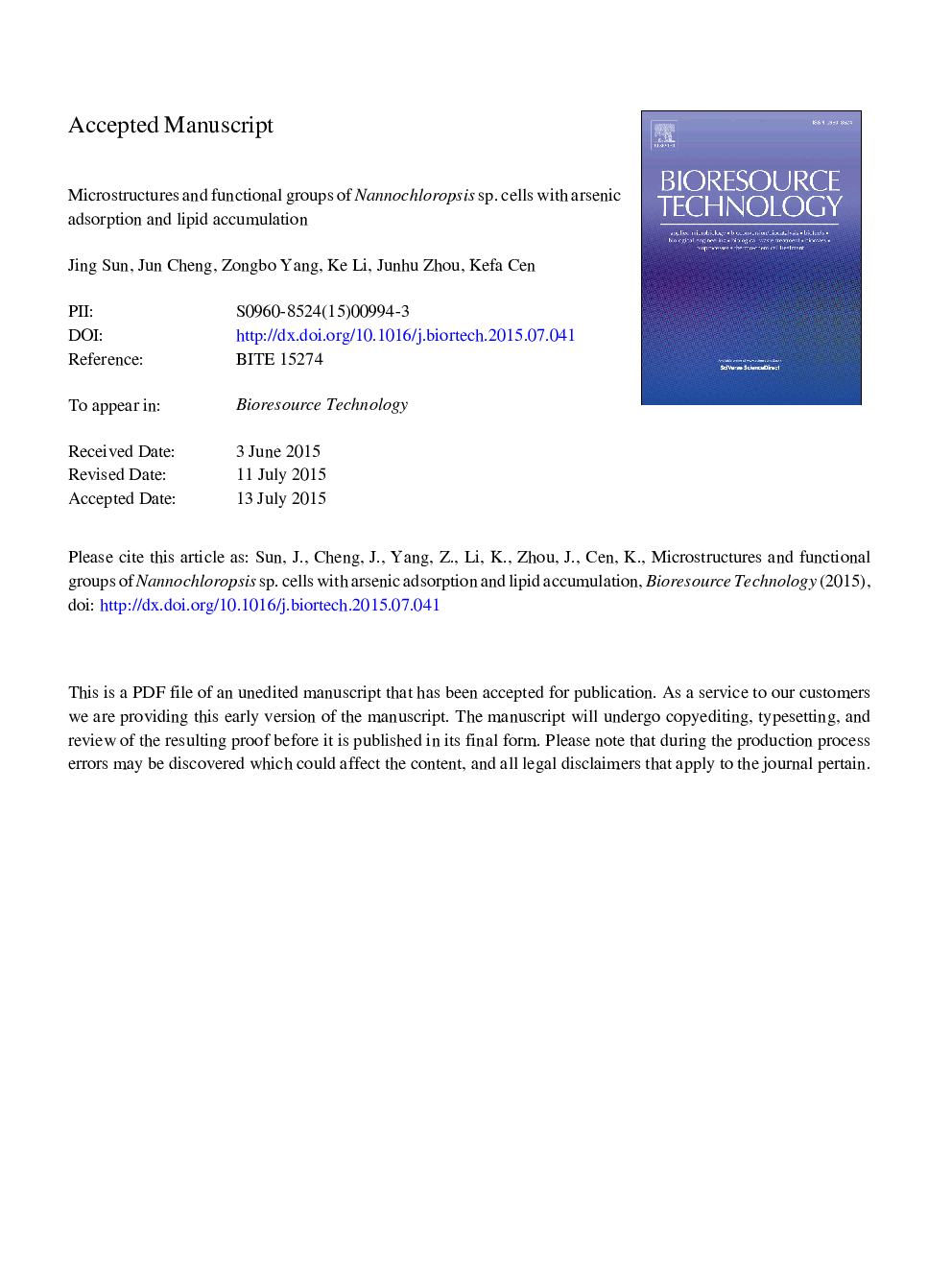| Article ID | Journal | Published Year | Pages | File Type |
|---|---|---|---|---|
| 7073915 | Bioresource Technology | 2015 | 27 Pages |
Abstract
The pore structures and surface morphological characteristics of Nannochloropsis sp. cells with arsenic adsorption were initially investigated by N2-adsorption analysis and scanning electronic microscopy. Functional groups of cells were analysed by Fourier-transform infrared spectrometry and X-ray photoelectron spectroscopy. Total surface area of microalgal cells increased from 0.54Â m2/g to 1.80Â m2/g upon arsenic adsorption. The external cell surface area increased. More wrinkles and measles-like granules formed on the surfaces as a result of arsenic toxicity. Arsenic ions blocked cell pores and decreased the average pore diameter and total pore volume. Ether cross-linked structures in the algaenan layer of cell walls were disrupted as the percentage of C-O functional groups decreased. These functional groups underwent complexation reactions with arsenic ions. Accumulation of polyunsaturated fatty acids decreased because of oxidative stresses induced by arsenic. The increase in generation of short-chain saturated fatty acids was favourable for the production of quality biodiesel.
Related Topics
Physical Sciences and Engineering
Chemical Engineering
Process Chemistry and Technology
Authors
Jing Sun, Jun Cheng, Zongbo Yang, Ke Li, Junhu Zhou, Kefa Cen,
